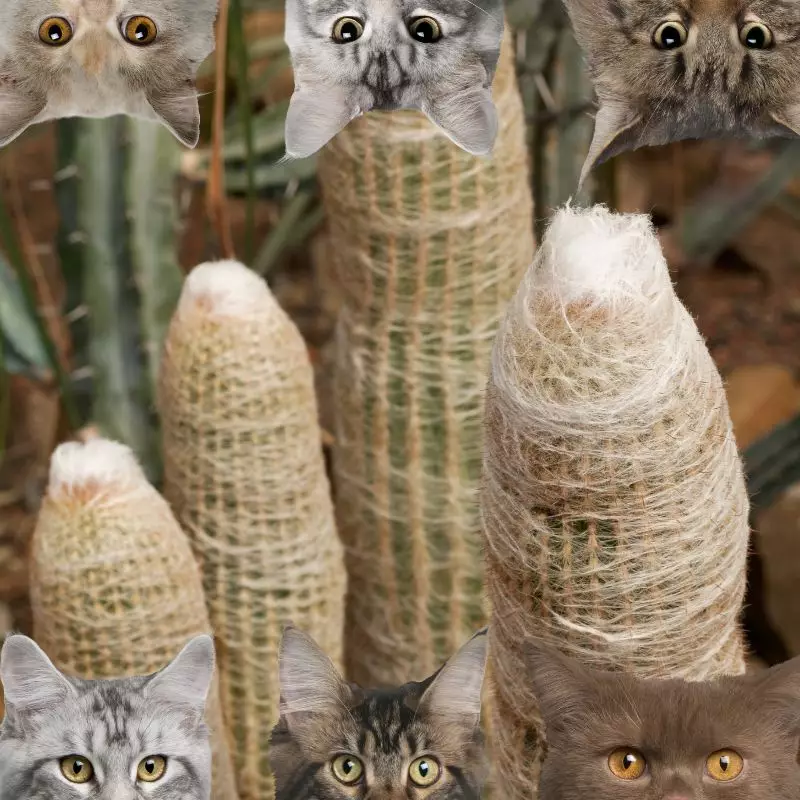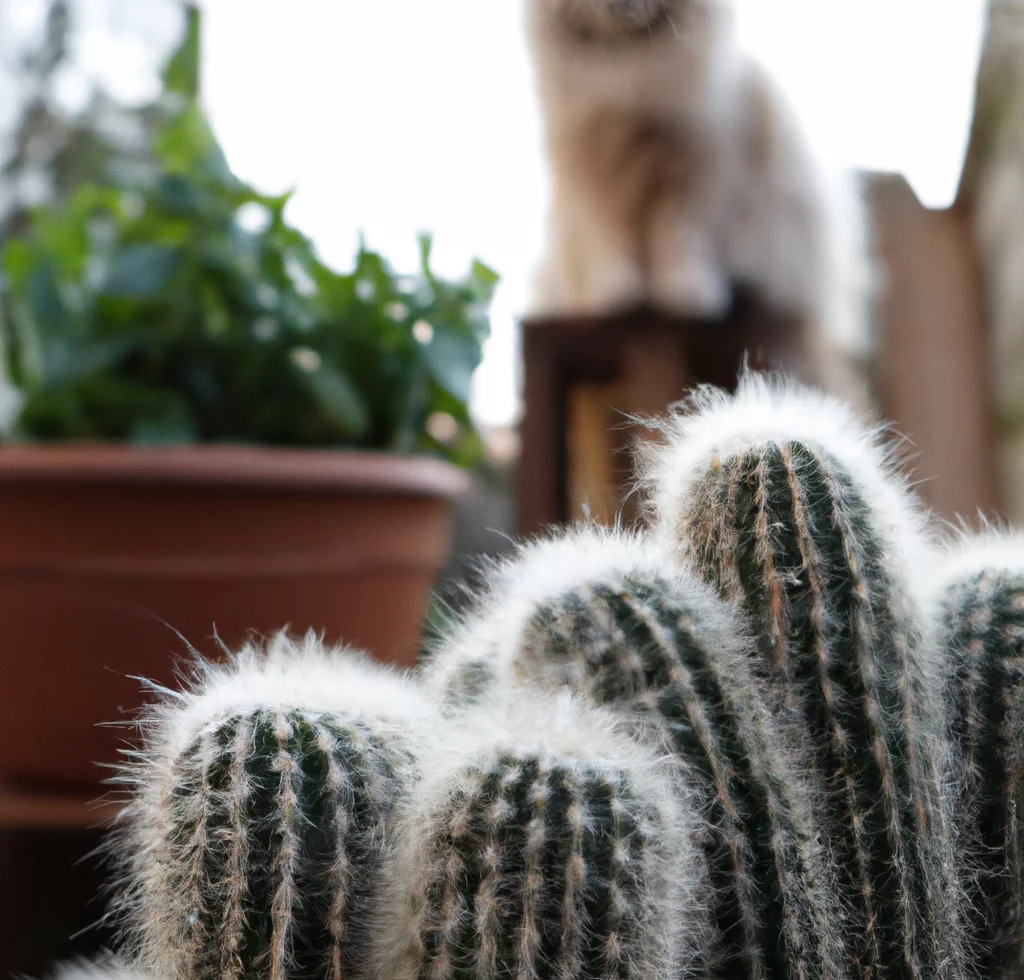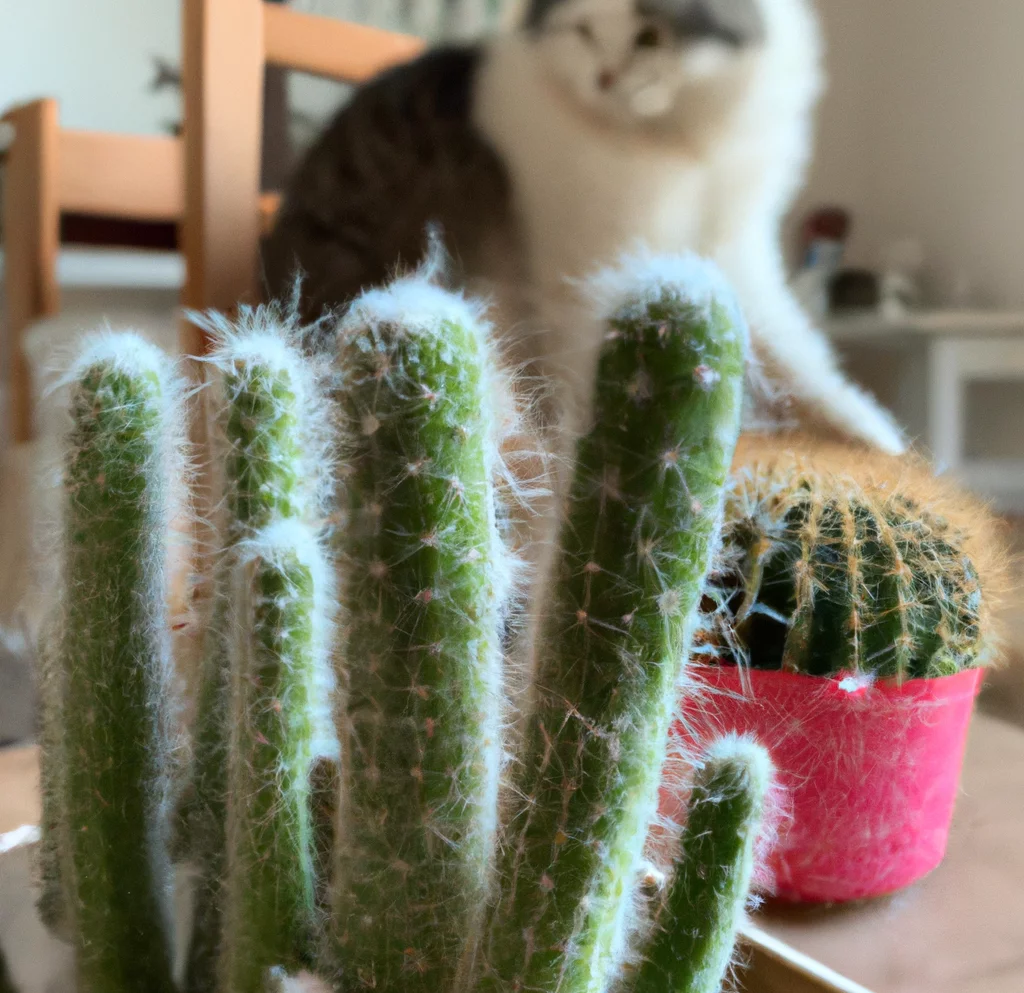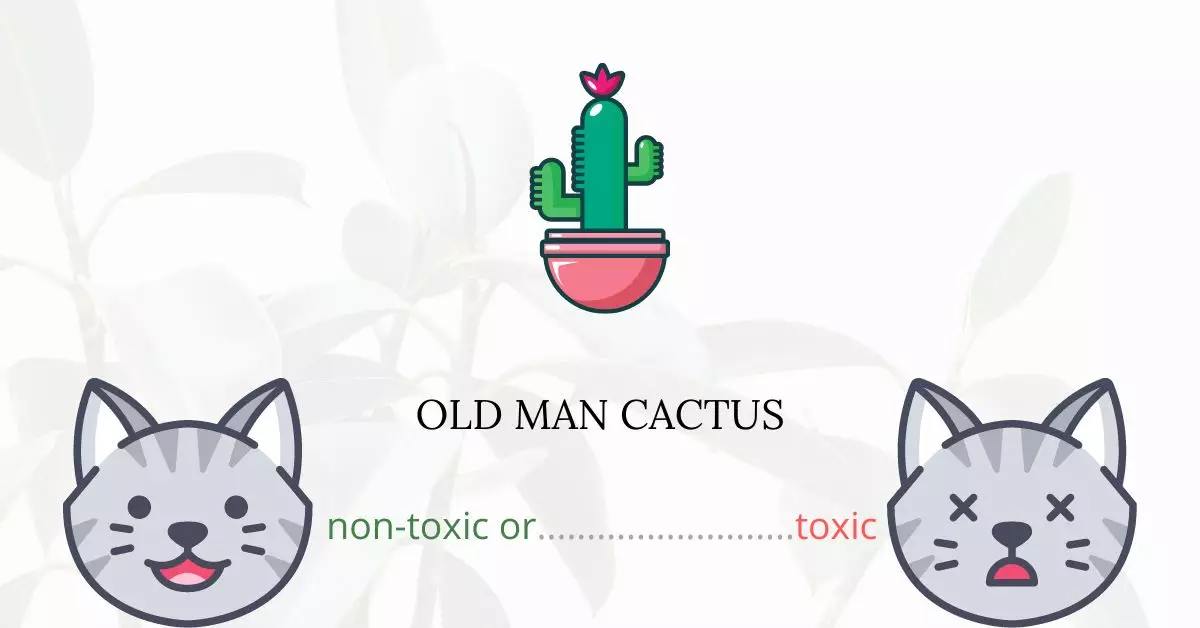No, Old Man Cactus is not considered toxic for cats.
This article was crafted in collaboration with a team of experienced DVMs (doctors of veterinary medicine). Their expert insights enable us to provide accurate and up-to-date information on the potential risks associated with various plants, focusing specifically on the Old Man Cactus in this context. We’ve also meticulously consulted high-authority websites such as the ASPCA and PetMD for comprehensive details.
According to the American Society for the Prevention of Cruelty to Animals (ASPCA), the Old Man Cactus is deemed safe for both cats and dogs. While the plant’s hairs are not hazardous, there are minute irritant hairs near the cactus’ skin; however, they are rarely detected and pose minimal harm.
Can Cats Eat Old Man Cactus?

Although they may not always be harmful to your cat, cacti are also not particularly nutrient-rich. Your cat has no need to eat cacti, therefore you don’t need to think of inventive methods to prepare it for them to eat. Keep feeding your cats what they normally do, and move the plants out of reach.
Although cacti are typically not hazardous to cats, this isn’t always the case, and there are risks involved if they ingest any. Because of their bristles, they do pose their own dangers.
Your cat’s mouth, throat, stomach, intestines, and pretty much every other part of their body that they pass through could be harmed by these.
What is an Old Man Cactus?

Central Mexico is the natural habitat of the columnar old man cactus (Cephalocereus senilis), a member of the Cactaceae family. It is a well-liked potted plant because of the unruly wisps of whitish hair around its stem. In Mediterranean regions, it thrives in outdoor cultivation.
Before flowering, old man cacti often reach a height of 6 meters (20 feet), yet they have the potential to grow twice as tall. The clump of long wool and bristles that covers the stem gives birth to the flat-faced blooms. Older plants typically have white hairs closer to the growing tips of the stems than younger plants, which have them almost entirely covered. Under the fuzzy hairs, there are sharp spines. Flowers often have a pink exterior and a white interior, and they bloom at night.
Keeping Cats Away From Old Man Cactus

Cacti can be made cat-proof by making them smell unpleasant. Houseplant leaves with cayenne pepper sprinkled on them will cause your cat to swiftly retreat. Citrus smells are also repulsive to cats. To help keep them away, mix orange and lemon peels with your plants in the pots.
Another choice is to directly mist the foliage with orange or lemon oil that has been diluted. IMPORTANT: Citrus oil extracts, such as those used in insecticide sprays, dips, shampoos, insect repellents, food additives, and scents, are poisonous to cats and should be avoided. Many cat owners who have issues with their cats using plants as litter boxes may buy plants with unpleasant textures so that cats will reconsider their potty habits.
Plants to Avoid For Your Cats
If you are a cat owner and unsure if the plants growing in your yard are harmful to your cats, check out this list of toxic plants for cats. You can also check our list of non-toxic plants for cats.





